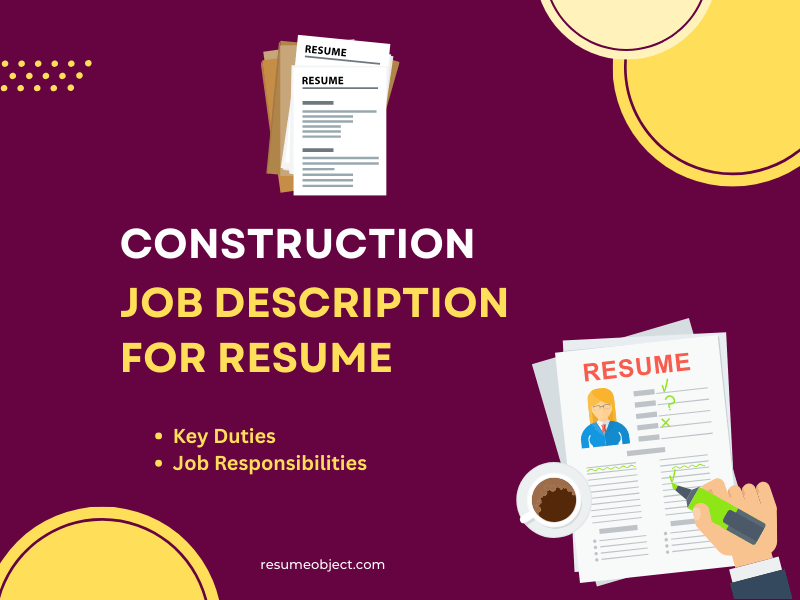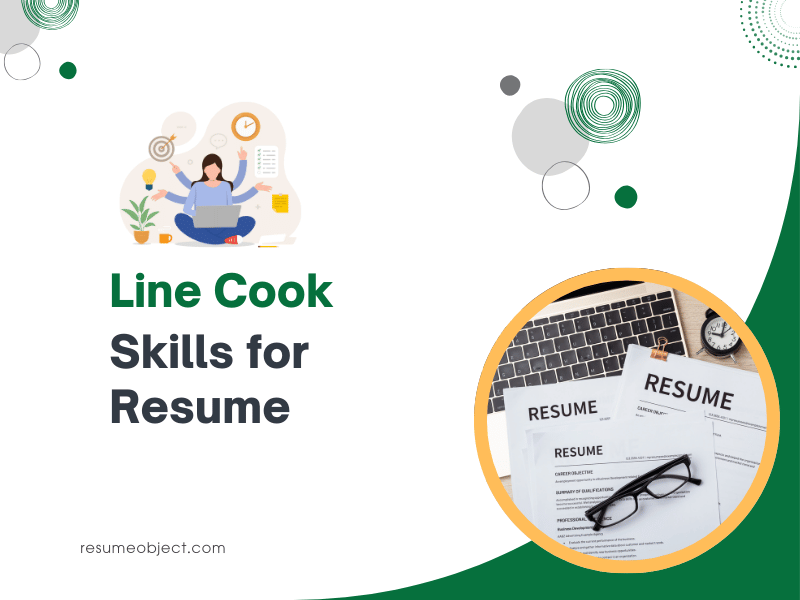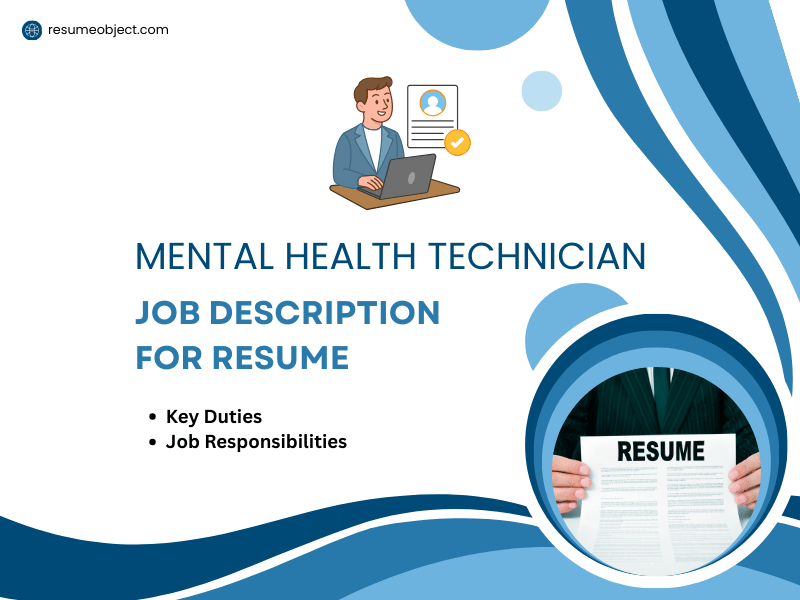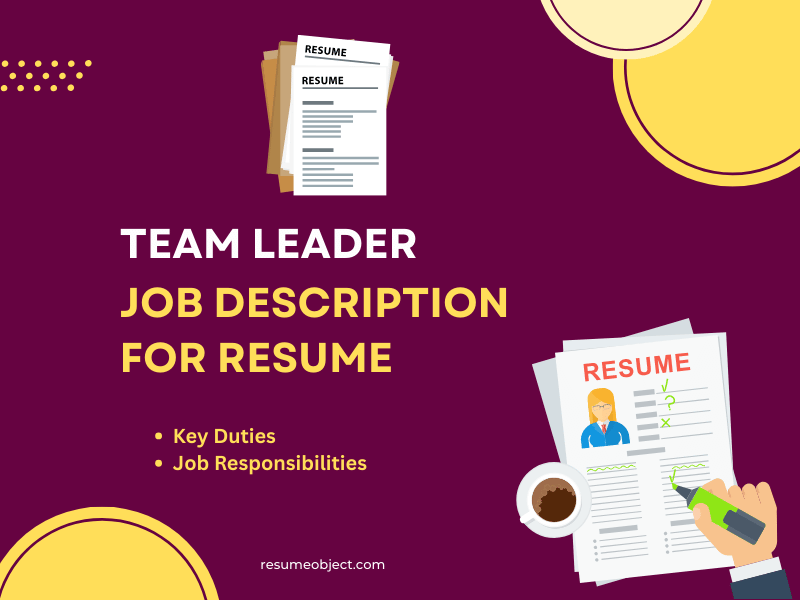Game-Changing Tips for Updating an Old Resume: Crafting a standout resume is crucial in today’s competitive job market, but an outdated resume can hinder your chances of landing an interview. Modern hiring practices, including applicant tracking systems (ATS) and evolving employer expectations, demand a fresh approach to resume design and content.
This article offers 10 practical tips to update your old resume for modern job applications. From optimizing for ATS to highlighting relevant skills and achievements, these strategies will help you create a polished, professional resume that captures hiring managers’ attention and aligns with current industry standards.
Why Updating an Old Resume Matters
An outdated resume can sabotage your job search in today’s fast-paced, tech-driven hiring landscape. Old formats, irrelevant details, or missing keywords may fail to pass ATS or resonate with recruiters, reducing your visibility. A 2024 survey by JobSeeker Insights found that 70% of hiring managers discard resumes that appear outdated or lack relevant skills, emphasizing the need for modernization. Updating your resume is critical because it:
- Aligns with ATS: Ensures compatibility with software scanning for keywords.
- Reflects Current Standards: Meets expectations for concise, achievement-focused content.
- Showcases Relevance: Highlights skills and experiences tailored to today’s roles.
- Boosts Confidence: Presents a polished, professional image to employers.
By refreshing your resume, you increase your chances of standing out in a competitive job market, whether you’re a mid-career professional, career changer, or returning to work after a break.
Old Resume vs Modern Resume: A Detailed Comparison
| Aspect | Old Resume | Modern Resume |
|---|---|---|
| Design & Layout | Plain text, minimal formatting, Times New Roman or Arial, no color. | Clean, visually appealing, with thoughtful use of white space, colors, and modern fonts like Calibri or Helvetica. |
| Length | Typically 2–3 pages regardless of relevance. | 1–2 pages with a focus on relevance and clarity. |
| Objective Statement | Generic objective like “Seeking a position in a reputable company…” | Replaced with a summary highlighting value, achievements, and strengths. |
| Job Duties vs Achievements | Lists job responsibilities or tasks performed. | Focuses on quantifiable accomplishments, results, and impact. |
| Formatting Style | Often inconsistent, with large blocks of text. | Uses bullet points, sections, and clear headers to improve readability. |
| File Format | Shared as printed copy or Microsoft Word file. | Typically shared in PDF format for consistency across devices. |
| Skills Section | Buried within work experience or missing entirely. | Features a dedicated skills section, often categorized (technical, soft, tools). |
| Keywords & Optimization | No keyword focus; not tailored for scanning systems. | Optimized for ATS (Applicant Tracking Systems) with role-specific keywords. |
| Visual Enhancements | No visual elements; looks the same for every job. | Includes icons, subtle graphics, and layout balance for a professional feel. |
| Customization | One-size-fits-all version used for multiple jobs. | Customized for each application, aligned with the job description. |
| Contact Information | Basic info like address, phone number, and email. | Includes LinkedIn, portfolio link, and modern contact layout. |
| Use of Action Verbs | Uses passive language like “Responsible for…” | Strong action verbs like “Led,” “Managed,” “Achieved,” for impact. |
| Font & Readability | Dense paragraphs and outdated fonts. | Modern fonts with consistent hierarchy and improved scanning experience. |
| References Section | Includes “References available upon request.” | Omits references; space is used for impactful content. |
| Overall Strategy | A record of employment history. | A strategic marketing document showcasing value and potential. |
Modern resumes have evolved to be more strategic, tailored, and visually engaging. They aim to not just list what you’ve done but sell what you bring to the table.
A modern resume prioritizes clarity, relevance, and adaptability, whereas older formats tend to focus on listing experience without aligning it with the employer’s needs.
Adapting to modern resume standards increases your chances of passing ATS filters and catching the attention of hiring managers in today’s competitive job market.
Tips for Updating an Old Resume
Updating your resume is essential to reflect current industry standards, showcase relevant skills, and align with employer expectations. A refreshed resume highlights your latest achievements, optimizes for ATS, and presents a professional image, ensuring you stand out in a competitive job market and increase your opportunities for career success.
These 10 tips provide a step-by-step guide to transform your outdated resume into a modern, impactful document. Each tip includes actionable advice and examples to help you succeed in today’s job market.
Also Read: 10 Proven Tips to Format a Cover Letter That Impresses Hiring Managers
1. Start with a Clean, Modern Format
An old resume likely follows outdated formatting styles—bulky fonts, excessive text, or even Microsoft Word templates from the early 2000s. Use clean, minimalistic formatting with plenty of white space. Stick to modern, easy-to-read fonts like Calibri, Arial, or Helvetica.
- Avoid using Times New Roman or Comic Sans.
- Use consistent font sizes and styling.
- Save your resume as a PDF to preserve layout across devices.
2. Update Your Contact Information and Online Presence
Check that your phone number, email address, and location are current. More importantly, include modern additions like:
- LinkedIn profile link (make sure it’s updated).
- Personal portfolio website (if applicable).
- Avoid listing outdated methods like a fax number or full home address.
Outdated contact details, like old email providers (e.g., AOL, Yahoo) or home phone numbers, can make your resume seem obsolete. Use a professional email (e.g., [email protected]) and include a LinkedIn profile or portfolio link if relevant.
3. Write a Strong Summary Instead of an Objective
Modern resumes replace the outdated objective statement with a professional summary. This is a brief, impactful paragraph (2–3 lines) highlighting your strengths, career focus, and key achievements.
Old resumes often include generic objectives like “seeking a challenging role.” Replace with a concise resume summary highlighting your skills and achievements, tailored to the job. For entry-level or career changers, a targeted objective may still work.
Example:
“Results-driven marketing specialist with 6+ years of experience in digital campaigns, SEO, and brand growth. Proven ability to drive engagement and ROI in competitive markets.”
4. Tailor the Resume to the Job Description
A generic resume won’t cut it. Customize your resume for each application by:
- Including keywords from the job posting.
- Highlighting relevant achievements over generic responsibilities.
- Reordering sections to prioritize what’s most applicable.
Use tools like Jobscan to analyze how your resume matches the job listing.
5. Modernize the Work Experience Section
Instead of simply listing job duties, focus on measurable achievements. Convert passive phrases into results-oriented statements using action verbs and numbers.
Outdated:
“Responsible for managing social media accounts.”
Updated:
“Grew Instagram engagement by 150% and increased followers by 20K through targeted campaigns.”
Use bullet points, not paragraphs, to improve readability.
6. Trim Outdated or Irrelevant Experience
If your resume includes jobs from over 15 years ago that are unrelated to your target role, consider trimming them. Employers focus on your most recent 10–15 years of experience.
Keep early jobs only if:
- They demonstrate a clear progression.
- They’re highly relevant or in the same field.
7. Highlight Modern Skills and Technologies
Remove outdated skills (e.g., typing speed, faxing, Windows 95). Focus on:
- Digital tools: Slack, Zoom, Trello, Salesforce, etc.
- Data & analytics: Excel (advanced), Google Analytics, SQL
- Industry-specific tools or certifications (e.g., HubSpot, AWS, Adobe CC)
Also, separate soft and hard skills into distinct sections if space permits.
8. Add Relevant Certifications and Training
Online certifications and recent training show employers that you’re keeping up with industry trends. Include:
- Online courses (Coursera, LinkedIn Learning)
- Certifications (PMP, Google Ads, HubSpot, etc.)
- Recent workshops, bootcamps, or professional seminars
Make sure the certifications are current and recognized.
9. Optimize for ATS (Applicant Tracking Systems)
Many companies use ATS software to scan resumes before a human sees them. To improve your chances:
- Use standard headings like “Work Experience,” “Skills,” “Education”
- Avoid graphics, text boxes, and complex columns
- Incorporate relevant keywords naturally from the job description
Avoid using headers/footers for important info—ATS may skip them.
10. Proofread and Get Feedback
Errors or outdated terminology can undermine credibility. Proofread for grammar, spelling, and consistency, and update jargon (e.g., replace “typing skills” with “data entry proficiency”). Seek feedback from a mentor or peer to ensure clarity.
Before submitting your resume:
- Run a spell check AND a grammar check.
- Ask a friend or mentor to review it.
- Read it out loud to spot awkward phrasing.
Errors or unclear language can instantly disqualify you from consideration, so make proofreading a top priority.
Examples of Updated Resume Sections
Below are examples of updated resume sections for different job categories, showing how to apply these tips to refresh an old resume.
Resume Summary
- Project Manager (Business & Management)
Old Objective: Seeking a managerial role to apply my skills.
New Summary: PMP-certified Project Manager with 10 years of experience leading cross-functional teams, delivering 95% of projects on time and reducing costs by 15%. Skilled in Agile methodologies and eager to drive efficiency at [Company Name]. - Graphic Designer (Arts & Media)
Old Objective: Looking for a creative position.
New Summary: Creative Graphic Designer with 6 years of experience, designing 50+ branding packages with 95% client satisfaction. Proficient in Adobe Creative Suite, seeking to enhance visual storytelling at [Company Name].
Work Experience
- Marketing Manager (Marketing & Advertising)
Old Entry (2005):
Marketing Manager, AdCorp- Responsible for campaigns and team management.
New Entry (2025):
Marketing Manager, BrandWorks, Chicago, IL, 2019–Present - Launched SEO campaigns, increasing traffic by 25% and generating $500K in revenue.
- Managed a $200K budget, optimizing ad spend to improve ROI by 30%.
- Responsible for campaigns and team management.
- Software Developer (Information Technology)
Old Entry (2010):
Programmer, TechInc- Wrote code for applications.
New Entry (2025):
Software Developer, TechCorp, San Francisco, CA, 2020–Present - Developed web applications using Python, improving efficiency by 30%.
- Led 5-person team to deliver projects 2 weeks early, earning 98% client satisfaction.
- Wrote code for applications.
Skills
- Healthcare (Registered Nurse)
Old Skills: Computer skills, teamwork
New Skills:- Technical: Electronic Medical Records, Patient Monitoring Systems
- Soft: Empathy (supported 15+ patients daily), Communication (trained 10 staff)
- Education (Teacher)
Old Skills: Teaching, organization
New Skills:- Technical: Google Classroom, Zoom
- Soft: Classroom Management (led 20 students), Adaptability (adjusted lessons for remote learning)
Common Mistakes to Avoid
When updating your resume, steer clear of these pitfalls:
- Keeping Outdated Formats: Dense paragraphs or tables confuse ATS and recruiters.
- Including Irrelevant Experience: Old, unrelated jobs dilute focus; prioritize recent roles.
- Using Unprofessional Contact Info: Emails like “[email protected]” look unprofessional.
- Ignoring ATS: Graphics or non-standard headings hide content from ATS.
- Neglecting Proofreading: Errors in dates or skills undermine credibility.
Tips for Different Career Stages
- Mid-Career Professionals: Focus on leadership and recent achievements, e.g., “Managed 10-person team, saving $100K.”
- Career Changers: Highlight transferable skills, e.g., “Applied client communication from sales to HR roles.”
- Returning to Workforce: Address gaps with volunteer work or courses, e.g., “Completed Coursera UX Design course, 2024.”
- Recent Graduates: Emphasize projects and internships, e.g., “Developed a website, improving navigation by 20%.”
Sample Modern Resume Template
Here’s a modern resume template sample you can use and customize in Microsoft Word, Google Docs, or your preferred editor. It follows a clean, ATS-friendly, and professional layout designed for modern job applications.
[Your Full Name]
[Your Job Title]
📍 [City, State] | 📞 [Phone Number] | ✉️ [Email Address] | 🔗 [LinkedIn Profile] | 🌐 [Portfolio URL]
Professional Summary
Dynamic and results-driven [Job Title] with [X]+ years of experience in [Industry/Field]. Proven expertise in [Key Skills or Technologies], with a track record of delivering measurable results in [Achievements or Contributions]. Adept at [Soft Skill or Trait] and passionate about driving business success through innovation and collaboration.
Key Skills
- Project Management
- Data Analysis & Reporting
- Client Relationship Management
- [Industry Tools/Software] (e.g., Salesforce, Excel, Adobe Creative Suite)
- Cross-Functional Team Leadership
- Time Management & Organization
- SEO & Content Strategy (if applicable)
Professional Experience
Job Title
Company Name – City, State
MM/YYYY – Present
- Led [project or team] that resulted in [quantifiable outcome].
- Streamlined [process or workflow], improving efficiency by X%.
- Collaborated with cross-functional teams to deliver [product/service].
- Maintained [KPI] over [timeframe].
Job Title
Company Name – City, State
MM/YYYY – MM/YYYY
- Managed [task or function], resulting in [impact].
- Designed and implemented [tool/strategy].
- Increased [metric] by X% through [method/initiative].
Education
Degree Earned – Major
University Name – City, State
Graduation Year
Optional: GPA, Honors, Thesis
Certifications
- Certified [Credential Name], Issuing Organization – YYYY
- [Relevant Certification or Online Course] – Platform (Coursera, LinkedIn Learning, etc.)
Projects (Optional)
Project Title
Brief description of the project, your role, and key results.
Tools Used: [List]
Volunteer Work (Optional)
Organization Name – Role
MM/YYYY – MM/YYYY
Summary of contributions and impact.
Languages (Optional)
- English – Native
- Spanish – Professional Proficiency
- [Other Language] – [Fluency Level]
References
Available upon request.
Bonus Tips
- Keep your resume to one page if you’re early in your career, or two pages if you’re more experienced.
- Avoid cliché phrases like “hard-working team player” or “detail-oriented professional.”
- Add LinkedIn recommendations or links to successful projects if possible.
Final Thoughts
Refreshing your old resume for modern job applications isn’t just about updating dates and adding your latest job. It’s about rethinking how you present yourself in a world that values concise, tailored, and visually appealing resumes. With these 10 practical tips, you can transform your outdated document into a powerful tool that captures attention, clears ATS filters, and wins interviews.
If you’re unsure where to start, consider using a modern resume template and working your way section by section. The time you invest now will pay off when your resume rises to the top of the stack. At ResumeObject, we’re here to support your job search with free resources. Start refreshing your resume today with our templates and samples!




